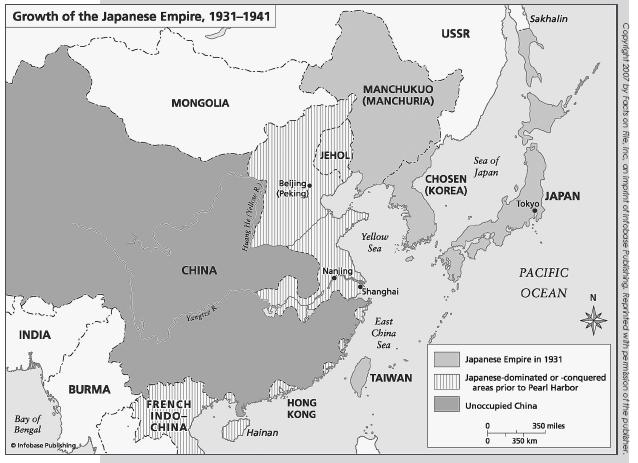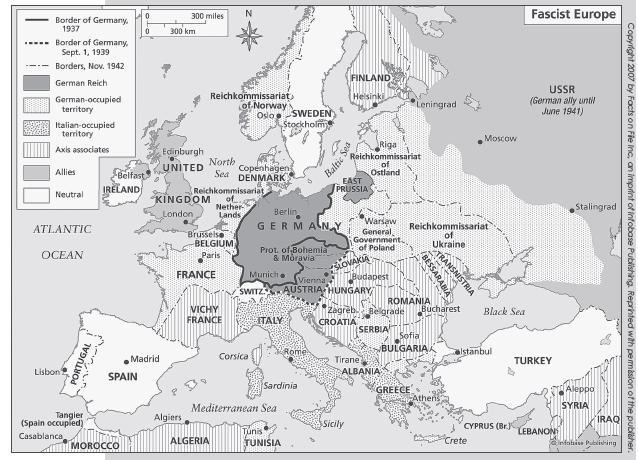Sergeant Gander (5 page)

The Canadian Cabinet War Committee met on September 23, 1941, to discuss the proposal and on October 2, 1941, Canada agreed to reinforce the Hong Kong garrison.
The Royal Rifles of Canada and the Winnipeg Grenadiers were selected for the mission. Canada's best trained units were classified as Class A and units that were not quite as far along in their training were labelled Class B. The remaining units, “due either to recent employment requiring a period of refresher training, or to insufficient training” that were “not recommended for operational employment at
The Winnipeg Grenadiers
The Winnipeg Grenadiers trace their origins back to 1908, and were one of the first
units mobilized when Canada entered the Second World War. The Grenadiers were
an English-speaking unit, recruited from western Canada. First designated as
machine-gun unit, they completed basic training during the winter of 1939â40. In
May 1940, they were converted to a rifle unit and sent to the island of Jamaica in
the Caribbean to perform garrison duty. In Jamaica, the Grenadiers, like the Royal
Rifles in Gander, adopted a dog as their mascot. Named “Queenie,” the little dog
was a favourite amongst the men. Winnipeg Grenadier William Bell recalls, “At
some point while we were there, Queenie became pregnant. I remember one day when
members of the regiment were on the way up the mountain near Newcastle and we
all had to stop so that Queenie could have her puppies along the way. I don't know
whatever happened to Queenie, but she was a good friend to many of us.”
11
After sixteen months in tropical Jamaica, the Grenadiers were recalled to Canada
and told to prepare for service overseas. Like the Royal Rifles, the director of military
training, Colonel John Lawson, had deemed the Grenadiers “insufficiently trained
and not recommended for operations.”
12
Japanese Expansion
As early as 1931, when Japan seized control of Manchuria, their desire to win complete
control over Eastern Asia and the Pacific was evident. In 1934â35, the Japanese
began a rapid naval buildup (in violation of the Washington Naval Conferences of
1921â22
13
and later treaties) and in November 1936, Japan joined Germany in an
Anti-Comintern Pact, which was ostensibly a defensive alliance against the spread
of Communism.
14
On July 7, 1937, Japanese and Chinese troops clashed along the
Japanese expansion in Asia, 1931â41.

Chinese-Manchurian border. This skirmish led to full-scale war, and most historians
refer to this as the start of the Second World War in Eastern Asia.
By 1938, the Japanese had penetrated deep into South China. In May of that
year Japanese troops landed at Amoy, 483 kilometres northeast of Hong Kong, and
by October they had landed troops at Bias Bay, only fifty-six kilometres northeast
of the colony. Canton fell to the Japanese later that month and by early 1939 the
Japanese occupied all of the territory adjacent to Hong Kong's mainland frontier.
15
In September 1940, the partnership between Germany and Japan (also including
Italy) was further formalized with the signing of the Tripartite Pact, which stated,
The Governments of Japan, Germany and Italy consider it the
prerequisite of lasting peace that every nation in the world shall
receive the space to which it is entitled. They have, therefore, decided
to stand by and cooperate with one another in their efforts in the
regions of Europe and Greater East Asia respectively. In doing this
it is their prime purpose to establish and maintain a new order of
things, calculated to promote the mutual prosperity and welfare of
the peoples concernedâ¦.
16
In other words, they intended to establish their own political and social agendas
in their chosen geographic spheres of influence, by force if necessary.
As the war continued to rage in Europe, Japan was adding to its conquests in
Asia. In July 1941, Japanese troops occupied French Indochina, an act that elicited a
strong response from the United States. President Roosevelt ordered all Japanese assets
in America frozen and placed an embargo on the shipment of goods to Japan. Japan
retaliated by freezing American assets in Japanese controlled territories, and trade
between the two nations effectively came to a standstill. Britain, preoccupied with the
war in Europe, could do little in response to Japan's aggression, but was concerned
about the security of the British colonies in Asia. In September 1941, Britain sent a
request to Canada for two battalions to help reinforce the colony of Hong Kong.
Britain's Situation in Europe
In the fall of 1941, Britain was facing a serious threat to her national security.
She stood alone in Europe, facing a powerful German war machine. From 1936,
when Germany entered the Rhineland, German aggression towards its European
neighbours went virtually unchecked. Germany annexed Austria in 1938, and
invaded Poland the next year. The spring of 1940 saw the German Blitzkrieg
attack sweep through Norway, Denmark, the Netherlands, Belgium, and France.
German expansion in Europe, 1937â42.

The British Expeditionary Force (BEF), which had been stationed in France, was
pushed back against the sea, and only the miraculous evacuation at the Dunkirk
beaches
17
saved the BEF from complete annihilation. Although a large number of
soldiers were saved all of the British Army's heavy equipment and machinery (guns,
trucks, ammunition, and fuel supplies) had to be left behind. Following the Dunkirk
evacuation, Britain needed months to re-equip and re-supply its armed forces properly.
The critical shortage of materials left the island extremely vulnerable to attack.
The Royal Navy was also stretched beyond its capabilities, having to provide not
only homeland defence but also to defend the convoys of war supplies that Britain
was importing across the Atlantic to sustain the war effort. They were also providing
support for the ground troops in the Mediterranean area and North Africa. The Royal
Air Force was busy defending Britain's skies against the waves of punishing German
bombers who appeared over the island. It was amidst these circumstances that Britain
launched its appeal to Canada for help in reinforcing their Hong Kong garrison.
present” were labeled Class C.
8
Both the Royal Rifles and the Winnipeg Grenadiers were Class C units. General Henry Duncan Graham Crerar,
9
who selected the two units, explained his choice stating, “In order to adhere to the principle of territorial representation, I consider it most desirable that one unit should come from Western Canada and the other from Eastern Canada” and “in the case of the Royal Rifles, there is also the fact that this battalion, while nominally English-speaking, is actually drawn from a region overwhelmingly French-speaking in character and contains an important proportion of Canadians of French-descent.”
10
Further, the Hong Kong posting was considered garrison duty and both the Royal Rifles and Winnipeg Grenadiers had experience with that type of assignment.
On October 11, 1941, Colonel J.K. Lawson, the army's director of military training, was promoted to the rank of Brigadier and given command of the two Canadian battalions, nicknamed “C” Force, who had been selected to reinforce Hong Kong.
The Royal Rifles were determined not to leave Gander behind. As Rifleman Phil Doddrige remembers, “⦠he was a favourite of all the men ⦠He was looked after by his handler, Fred Kelly, but I think he had love enough to go around as he showed great affection for all of us. As Regimental Mascot he went everywhere with us, including Hong Kong.”
1
Gander travelled with the men to Valcartier Camp (north of Quebec) where the Rifles were given “embarkation leaves,” which

Royal Rifles en route to Vancouver (at Valcartier), Ocâtober 23, 1941.

Gander marching with Fred Kelly in Quebec City, 1941.
allowed them to make a final visit home or to enjoy one final holiday, and new light-weight tropical uniforms. Sergeant George MacDonell remembers, “⦠excitement was high and we were so glad to be leaving our boring garrison duties behind for our new adventure.”
2
Some of the men figured that the tropical uniforms meant they were headed to North Africa to serve with the British fighting there.
After the leaves were over and the necessary equipment had been distributed, the Royal Rifles travelled to Quebec City. Gander marched with the troops on parade up to the Plains of Abraham. Once at the top, Fred Kelly found a washroom with shower facilities and treated Gander to a cooling shower before the long, hot descent. The crowds loved him.
Boarding a train in Quebec City, the Rifles were surprised to find themselves heading west towards Vancouver, instead of east towards Halifax (the most likely departure point for the suspected posting to North Africa).
3
On their way westward the train stopped at Winnipeg and the Rifles were joined by the Winnipeg Grenadiers. The combined force of just over two thousand men (and Gander), nicknamed “C” Force and under the command of Brigadier General J.K. Lawson, set off for Vancouver.
Once in Vancouver, however, the Royal Rifles ran into some difficulties with Gander. Fred Kelly was assigned to embark on the HMCS
Prince Robert
, the escort for the troop ship the TSS
Awatea
. The captain of the vessel refused to allow Gander entry, insisting there was no place for a “bear” on his ship. The enlisted men of the Royal Rifles were furious, especially since an officer in their regiment had been allowed to board with his small, black dog. After a tense conference, where the soldiers managed to convince the captain that Gander was, in fact, simply a very
large
dog, Gander was allowed to walk down the gang plank and join his comrades.